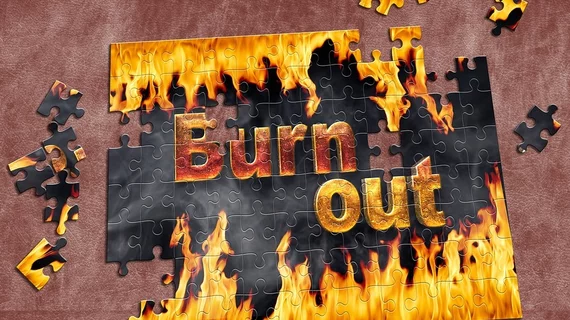Academic chairs in radiology experiencing burnout at a high rate
A significant number of chairs in academic radiology departments experience at least one of three primary symptoms of burnout—emotional exhaustion, depersonalization or personal accomplishment—according to new research published in Academic Radiology.
“More than one-third of academic chairs in radiology are experiencing one or more symptoms of burnout,” wrote Dhakshinamoorthy Ganeshan, MD, of the University of Texas MD Anderson Cancer Center in Houston, and colleagues. “Approximately five percent of academic chairs in radiology are experiencing high burnout and are affected by high emotional exhaustion, high depersonalization and low personal accomplishment.”
In this first-of-its-kind study, Ganeshan and colleagues sought to determine the self-reported prevalence of burnout among academic radiology department chairs based in the United States by administering a survey to members of the Society of Chairs of Academic Radiology Departments. They measured burnout using the Maslach Burnout Inventory Human Services Survey.
A total of 87 chairs with an average age of 58 years were used as the final study cohort. The respondents had an average of nine years of experience as a department chair. Additionally, they worked an average of 62 hours per week.
About 5 percent of the chairs met all three criteria for high burnout. And 38 percent had high emotional exhaustion and/or high depersonalization. Only 25 percent of respondents met the criteria for low burnout, which translates to low emotional exhaustion, low depersonalization and high personal accomplishment.
“When we used the original definition of burnout (high emotional exhaustion score plus high depersonalization score plus low personal accomplishment score), low professional satisfaction scores, and low work-life balance satisfaction scores were significantly associated with high burnout,” the authors wrote.
The numerous professional stressors “significantly associated” with high burnout include: hospital and department budget deficits, Medicare/Medicaid billing audits, loss of key faculty, union disputes, being a defendant in a malpractice care and tenure or promotion disputes, among other factors.
“Given the paradigm changes in the healthcare environment, chairs of academic radiology departments have a highly demanding job of leading the current generation of radiologists while shaping the future of the radiology workforce,” the researchers noted. “It is vital that institutions recognize that burnout is a serious and significant problem and create long-term strategies to help radiology chairs circumvent burnout.”
Lack of an institutional support group for chairs was also significantly associated with burnout. Additionally, chairs with burnout had significantly fewer faculty members in their department than chairs without burnout.
The researchers suggested developing wellness committees and support groups may help promote the overall health and well-being of radiology chairs for the future.
Though challenges from the diagnostic radiology/interventional radiology pathway, concerns regarding the future role of machine learning and AI and its impact on the radiology job market and healthcare reforms may continue to contribute to further burnout.
“Further studies evaluating the efficacy of targeted interventions for reducing burnout in the radiology chairs, especially those who may be looking to quit in the near future would be helpful,” Ganeshan and colleagues concluded.

